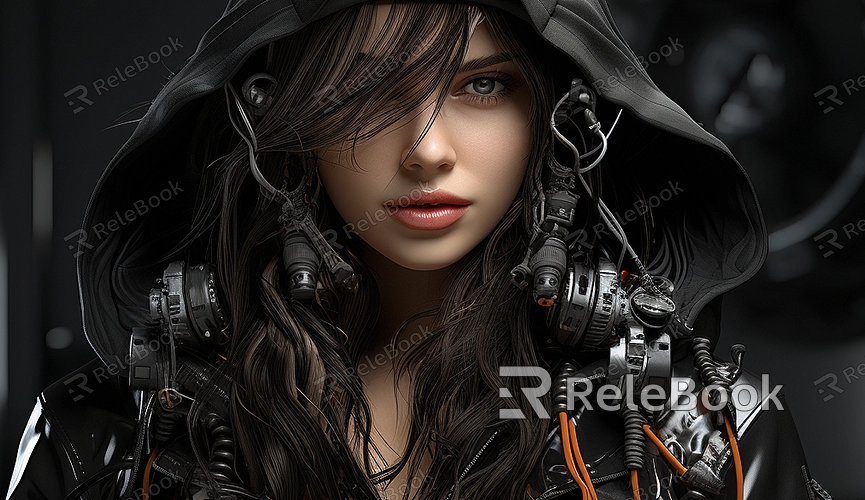Maya how to improve skin texture on face
In 3D modeling and animation production, the quality of facial skin texture directly impacts the realism and visual experience of the artwork. Maya, as a powerful 3D modeling software, provides rich tools and techniques to enhance facial skin texture. This article will introduce how to improve facial skin texture in Maya and provide some practical tips and suggestions.
Using High-Quality Texture Maps
High-quality texture maps are key to improving skin texture. Here are some practical suggestions:
1. Obtain High-Resolution Skin Textures
Using high-resolution skin texture maps can significantly enhance detail presentation. High-quality skin texture materials can be purchased or downloaded online, ensuring that the texture resolution is high enough to remain clear when zoomed in.

2. Utilize Multiple Texture Maps
In addition to basic diffuse maps, you can also use normal maps, bump maps, and specular maps. These maps can add detail and depth to the skin, making facial texture more realistic.
Detailed UV Unwrapping
UV unwrapping is the process of flattening a 3D model into a 2D plane so that textures can accurately cover the model's surface. High-quality UV unwrapping can avoid texture stretching and distortion, improving texture effects.
1. Manually Adjust UV
In Maya, you can manually adjust UV to ensure that each face is evenly distributed in the texture space. Use Maya's UV Editor tool for fine adjustments to avoid overlap and stretching.
2. Use UV Automatic Unwrapping Tools
Maya provides several automatic UV unwrapping tools, such as "Automatic Unwrapping" and "Unfold UV." These tools can quickly generate preliminary UV layouts, which can then be manually adjusted to optimize the effect.
Texture Painting with Substance Painter
Substance Painter is a professional texture painting software compatible with Maya. It provides rich tools and materials for fine texture painting.
1. Create Base Textures
In Substance Painter, you can use base materials to create basic skin texture effects. Select appropriate skin materials and adjust parameters such as color and roughness.
2. Add Details
Use brush tools to add details to the base texture, such as fine lines, pores, and spots. By using different brushes and layering techniques, gradually increase the details to make the skin texture more realistic.
Using Maya Renderers
Choosing the right renderer can significantly enhance the presentation of skin textures. Maya provides multiple renderers such as Arnold, RenderMan, and V-Ray, each with its unique advantages.
1. Use Arnold Renderer
Arnold is a commonly used renderer in Maya, supporting high-quality skin rendering. You can use Arnold's standard surface material (AiStandardSurface) and adjust subsurface scattering (SSS) parameters to achieve realistic translucency effects.
2. Use Render Layers and AOV
By using render layers and Arbitrary Output Variables (AOV), you can render different texture channels separately and then fine-tune them in post-production compositing. For example, you can render skin highlights, reflections, and subsurface scattering effects separately, and then adjust them in post-production software to enhance the final effect.
Post-Processing
Post-processing is an essential step in enhancing skin texture effects. Software such as Photoshop, Nuke, or After Effects can be used to further adjust and optimize skin textures.
1. Adjust Color and Contrast
Adjusting color and contrast can make skin textures more vivid and realistic. In post-processing software, use color correction tools for fine adjustments to enhance the visual effect of the skin.
2. Add Fine Noise
Adding some fine noise appropriately can increase the texture of the skin, making it look more realistic. You can use noise filters or add noise layers, fine-tuning opacity and blending modes for the best effect.
Improving facial skin texture in Maya requires the comprehensive use of high-quality texture maps, detailed UV unwrapping, professional texture painting software, appropriate renderers, and post-processing techniques. Through the methods mentioned above, skin texture realism and detail can be significantly enhanced, making 3D models more realistic and vivid. If you need high-quality 3D textures, HDRI, or 3D model downloads for your modeling and virtual scene creation, you can obtain them from Relebook, where you can directly import textures and 3D models into your project after downloading.

